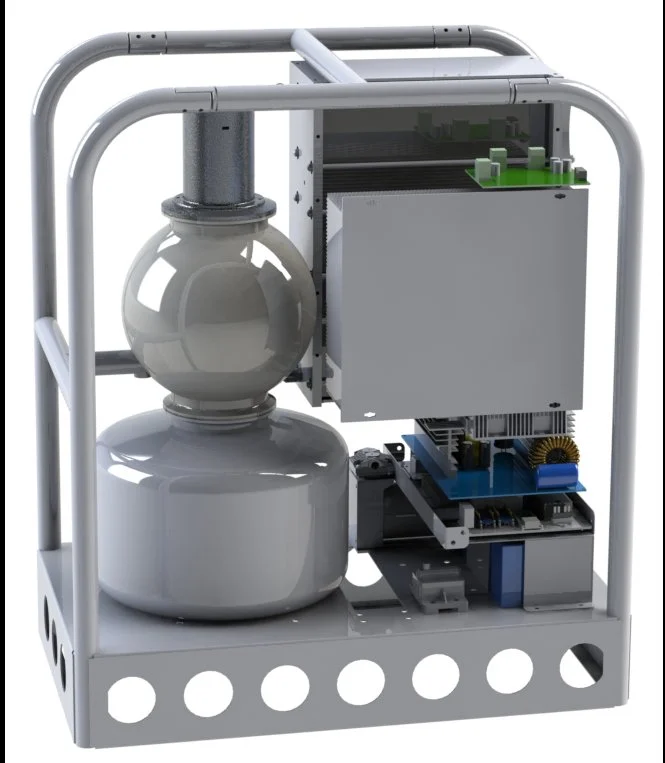Compact Hydrogen Generation
Steam methane reforming (SMR) is a commercial technology that is used at large scales to generate syngas and hydrogen, which can be used as fuel directly, or used as a chemical feedstock in petroleum refining and chemicals production. TDA Research has developed a reforming process capable of converting nearly any hydrocarbon feedstock into H2. Our process has the potential to use as little as 1/4 of the energy required per pound of H2 produced (energy required to operate the process) compared to SMR. We call our process HyRes (Hydrogen from Residuum), and we can steam-reform anything from shale derived natural gas to bottom-of-the-barrel atmospheric and vacuum residuum at low steam to carbon ratios. The key to our process is the reactor design – a dual circulating fluidized bed (DCFB) reactor system. The first reactor is a steam reformer, where fuel reacted with steam to produce syngas that could be subsequently shifted and purified downstream using mature technologies, such as pressure swing adsorption (PSA), to produce pure H2. The second fluidized bed reactor is a catalyst regenerator where coke and sulfur are burned off with air. This reactor configuration permits us to maintain catalyst activity by continuously removing carbon deposited on the catalyst during the reforming process.
In addition to using less energy, the use of circulating fluidized beds for the reformer and regenerator means that the process no longer requires the use of the extremely expensive high alloy tubes such as those used in conventional fixed bed steam reforming. Because the catalyst is regenerated before enough carbon can build up to damage the catalyst, there is no irreversible catalyst deactivation due to coking (or sulfur) deposition.
The key to our process was the reactor design – a dual circulating fluidized bed (DCFB) reactor system. The first reactor is a steam reformer, where fuel reacts with steam to produce syngas that could be subsequently shifted and purified downstream using mature technologies, such as pressure swing adsorption (PSA), to produce pure H2. The second fluidized bed reactor is a catalyst regenerator where coke and sulfur are burned off with air. In addition, the Ni metal in the catalyst is oxidized to NiO during this step, providing the heat of reaction for steam reforming when hot catalyst returns to the reformer. The NiO in the catalyst is reduced back to catalytically active Ni metal by hydrogen and hydrocarbons in the reformer, and steam reforming of the VGO continues. HyRes uses circulating fluidized bed reactors, one for steam reforming and one for catalyst regeneration.
Green hydrogen production - efficiently separates carbon from the hydrogen in the synthesis gas generated by:
coal gasification
plastic waste from municipal solid waste (MSW)
biomass production
High efficiency
Low operating pressure
Single stage modular pressure swing adsorption (PSA) process

